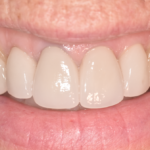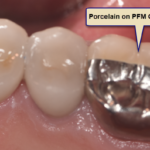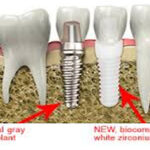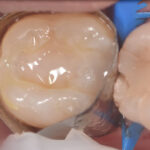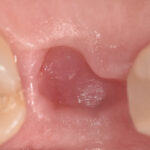Fluoride acts as a cumulative toxin that has an affect on bone mineral metabolism. The development of osteo-fluorosis, which is increasing globally, is dependent on the total amount of ingested fluoride. Studies have also shown that levels of 4-10 ppm in drinking water causes progressive loss of cartilage, in various joints as well as crippling deformities regardless of .other variables.
Fluoride can cause lesions in the kidneys, and excessive retention of fluoride due to renal (kidney) insufficiency.. Acute renal failure may results from accidental industrial exposure to fluoride, with the toxic effects to the kidneys. This results in aluminum deposition into bone because fluoride is eliminated through the kidney, . Decreased kidney function results in increasing serum fluoride, so a vicious cycle begins. The Center for Disease Control calls for a normal control range for school fluoridation systems of up to 6.5-ppm, even though there is ample evidence of the toxic renal and other effects caused by a bottled mineral water at 8.5 ppm
It may b that men may have an even greater susceptibility to the detrimental effects of fluoride on bone strength. A comparison of fluoridated and non-fluoridated areas revealed a significant increase in bone cancer among males under 30-years of age the animal model also produces bone cancers. For this reason a gender-specific physiologically based model has been developed to describe the absorption, distribution and elimination of fluoride. Testosterone deficiency is a major risk factor for male osteoporosis and fluoride use correlates with decreased testosterone levels as well as reduced sperm count and motility. It could be argued that this is the causative factor for reduced fertility rate in areas of the U.S. having fluoride levels of at least 3-ppm. That is, based on three different types of animal studies, it may be that this decrease in the total fertility rate might be due to the amount of fluoride ingested by men.

Carey O’Rielly DDS has been a practicing dentist for 35 years. He went to USC Dental School and Duke University for his undergraduate degree. He grew up in Laguna Beach and now lives in La Costa with his wife Victoria, who runs his office.
He began his career by owning and operating a network of six offices in the San Francisco Bay Area. Presently he owns a private holistic practice in North County San Diego’s Encinitas.
Dr. O started looking for solutions to his health challenges that resulted from the stress and environmental toxicity that built up over a ten year period running his dental network. He has dedicated himself to learning about oral systemic problems and how dentistry can affect your health. He has applied what he has learned over the last twenty years to ensure he, his staff and his patients are protected from the chemicals and toxic materials found in most dental offices. He has produced an environmentally friendly office that is also peaceful and calm.
He is an expert on dental materials having looked at hundreds of biocompatibility lab tests over the years. He has identified the most bio-friendly materials to use in his practice and which dental materials can be used to replace metal fillings and crowns, including BPA free and fluoride free ‘white’ fillings. He also uses metal-free Zirconia or ceramic implants and PRF (platelet-rich fibrin) grafting materials which come from the patient’s own blood.
Dr. O’Rielly teaches C.E. courses on the systemic effects of gum disease. He is an expert in using phase contrast microscopy for analyzing dental infections, where he shows patients what kind of microbes, i.e. bacteria, amoeba, and yeasts like candida are populating the mouth and affecting the body as a whole.
He has an educational blog and is writing a book on dental health called ‘Hidden Dental Infections: Healing Root Canals and Infected Teeth with the Erbium Laser’ where he discusses dental nutrition, toxic dental materials and the effects of old root canals on inflammation and overall health.

